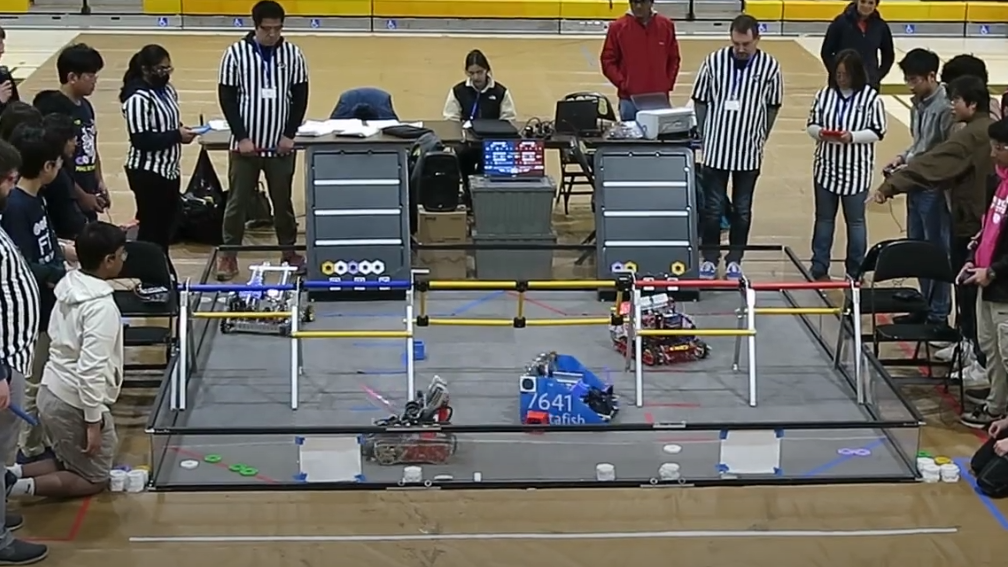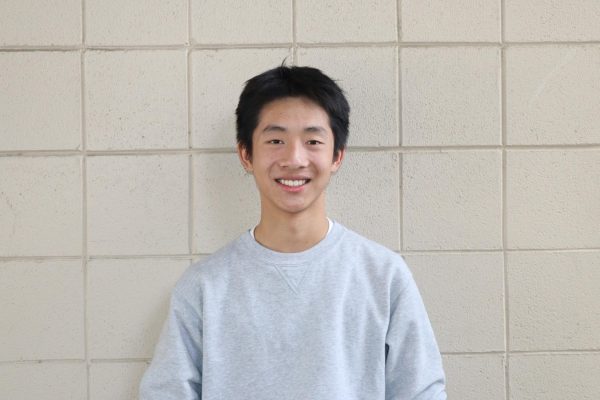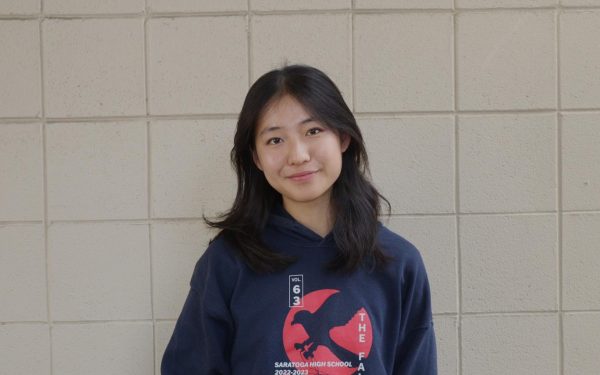With the NorCal First Tech Challenge (FTC) League tournament just around the corner on Feb. 10 at The King’s Academy, the school’s two rookie FTC teams, MSET Jellyfish and MSET Bettafish, are scrambling in preparation as their hard work of the past six months is put to the test.
The teams’ performance in the preliminary rounds will determine their eligibility for the elimination rounds. Winning elimination rounds then secures a seat in the Regional Championship.
This year’s FTC game, “CenterStage,” tasks robots with picking up and scoring pixels — colored hexagonal discs — on boards situated on the opposite side of the playing field.
Matches last two minutes and 30 seconds and are divided into a 30-second autonomous period where the robot conducts pre-programmed tasks, a 90-second driver-controlled (teleop) period and a 30-second endgame period. During the endgame period, robots can shoot a paper airplane, or “drone,” into one of three zones to score points and suspend itself on poles mounted on the field for extra points. Teams can win additional points depending on how pixels are placed on the board.
This season, the 15 members of each Jellyfish and Bettafish are participating in league meets, a qualifying system leading to the Regional Championships. During league meets, around 20 teams meet together at a designated location to play qualification matches, which provide opportunities for teams to increase their ratings and improve overall league rankings. Each season includes three meets and one tournament, where their rankings help them qualify for the elimination rounds and the Regional Championship.
Bettafish and Jellyfish are currently ranked first and fourth, respectively, within the 16-team NorCal South Bay League.
Although Bettafish came out of the final league meet in January as the top seed, sophomore Eric Woo-Shem, a software lead, thinks more time is necessary to fine-tune the robot’s hardware and autonomous programming, practice driving and improve overall consistency.
“In previous competitions, we experienced unexpected failures of hardware modules but were able to fix them without costing us any matches,” Woo-Shem said. “We also had trouble keeping our autonomous and teleop scores consistent, which we are hoping to correct with more time and practice.”
During the league tournament, the top four ranked teams will select two other teams for their alliance, forming a group with whom they will compete with for the elimination rounds. In total, 12 teams will make it to the semi-finals, and six to the finals. The teams that win the finals will qualify for the Regional Championships from March 4-5, at
Since the Bettafish team is seeded first going into the league tournament, Woo-Shem expressed concerns about how the Bettafish robot’s inconsistent hardware modules will hold up on the field with three other robots. Adjusting to the field at The King’s Academy may also pose a challenge for the team especially since their robot’s autonomous is tuned for the field at SHS. Though the fields at different locations are built out of the same materials, debris and wear and tear can make consistency across multiple fields difficult.
“We are going to be rigorously testing our hardware modules over the coming weeks to make sure that everything is robust,” Woo-Shem said. “Although nothing is certain, I believe that we will be prepared to the best of our abilities for the league tournament.” Woo-Shem said.
Jellyfish hardware lead sophomore Arista Suvarna believes the team must exercise extra caution regarding blowing fuses during matches, as such an incident had cost them a match and a potential league-high score.
“Some challenges we faced in previous competitions were robot components failures, blown fuses, and disconnecting issues,” Suvarna said. “After each competition, we had retrospective meetings, breaking down what went wrong in each match and how to avoid those failures in the future.”
Going forward, Suvarna has confidence that Jellyfish will be able to break into the elimination rounds, as long as the robot can stay consistent as it was during the third league meet, where it scored the first and third highest scores of the day.
“We need to make sure that our robot is as consistent as it can be, which is crucial to our success,” Suvarna said.



































